► CAR drives the 765LT
► 720S + Longtail = this
► How much more is more?
Have you heard of the Carolina Reaper chilli? It’s been named the hottest pepper in the world and tastes 200 times spicier than a jalapeno. It is, for all intents and purposes, far too hot to use in normal cooking.
You could say the same about the McLaren 720S – a car that, for the UK at least, has more power and grip than you could ever realistically need. Except now there’s an even hotter version full of bits from the Senna called the 765LT.
Woking says it’s ‘the most dynamically advanced and engaging LT model ever’ – that’s a huge claim from a bloodline that includes the legendary 675LT, and, technically, the F1 GTR race car.
One thing is for sure – the 765LT is faster, lighter and more powerful than any previous car with the LT badge. So it should be quite good.
There are lots of McLarens now, what’s this one for?
Think of it as a more focussed 720S – the 765 in its name referring to the metric horsepower it produces while the LT suffix signals an increase in driver engagement, optimised aerodynamics, and a drop in kerb weight. The licence plate holder, for example, is now made from carbon fibre.
So an LT fits in that tricky niche of being track-focused but enjoyable in all situations, communicating its limits with greater clarity and responding more directly to your inputs. More of the good stuff, basically.
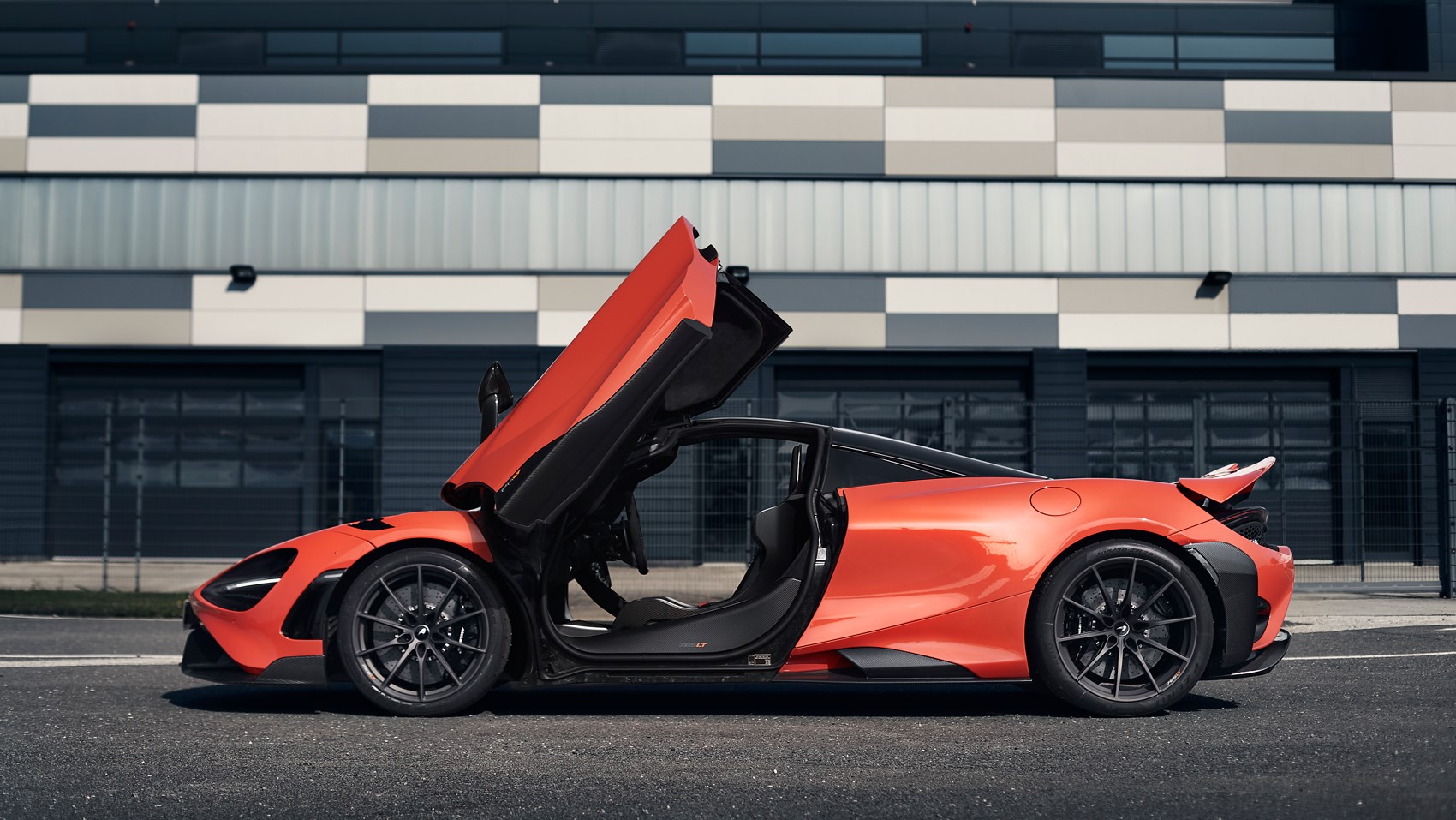
I know what you’re thinking – what’s the point in another very fast track car when you’ve already got the 620R and Senna? And really, if you want the ultimate in road and circuit performance, what’s wrong with a 600LT?
Tell me more about the engine…
Because this is a McLaren it uses a twin-turbocharged V8, and because it’s a Super Series car it displaces 4.0- rather than 3.8-litres. It’s not a bespoke power unit, starting life as the flat-plane-cranked, dry-sumped M840T found in the 720S. But from there it gains some specific LT upgrades.
Power is increased to 755bhp and 590lb ft via more boost, while software and hardware upgrades allow the engine to cope with higher in-cylinder pressure – namely a set of forged aluminium pistons and a three-layer head gasket from the Senna. Plus an additional pump to fire in more fuel.
The result? The 765LT is nearly as fast as the P1 and Senna – 0-62mph falling in an identical 2.8 seconds, while 0-124mph takes two tenths longer at 7.0 seconds dead.
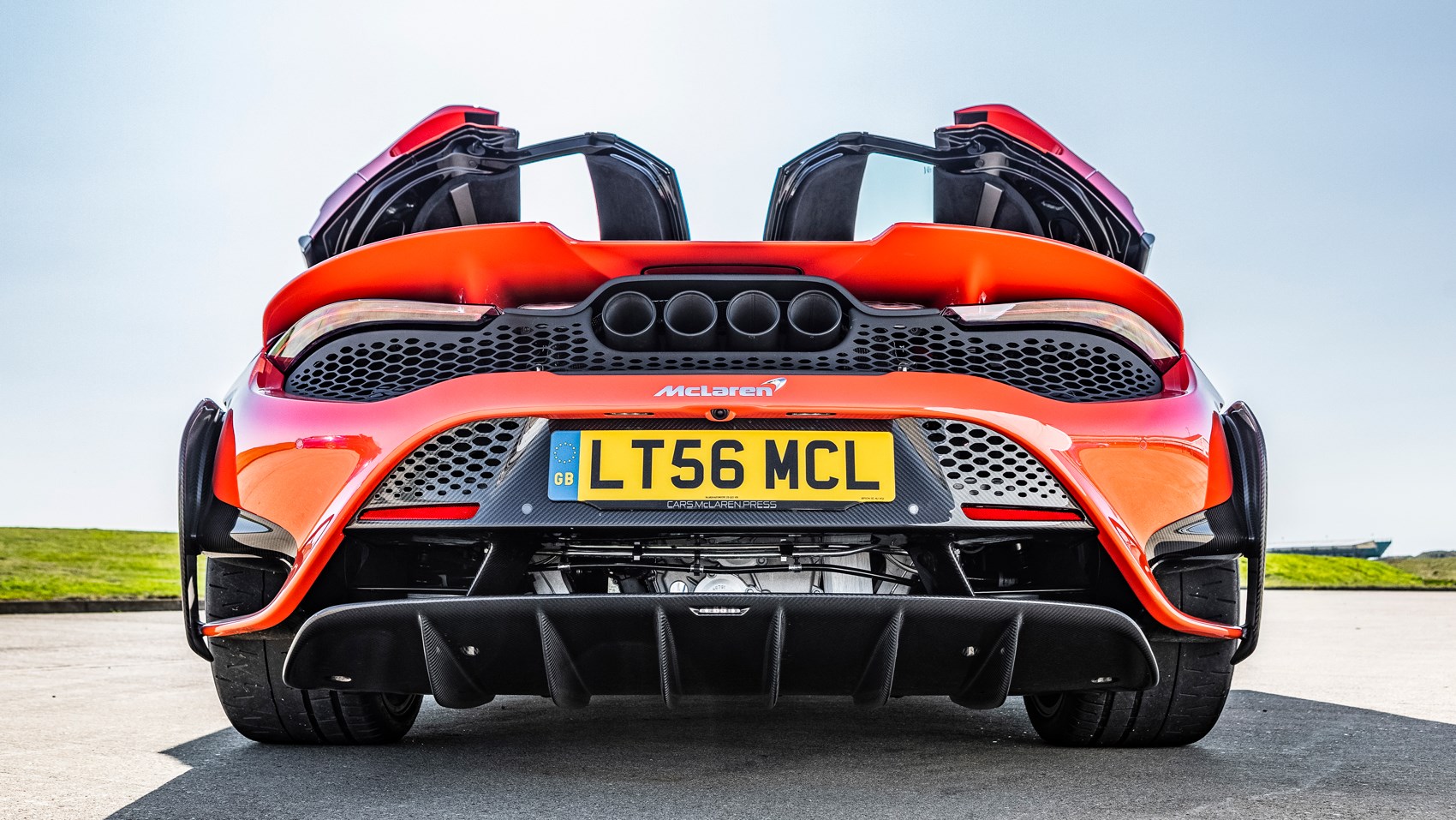
Numbers don’t really do it justice. Like the 720S upon which this car is built, it is shockingly fast at road legal speeds. But from there it just doesn’t let up – and it’s the second half of the 0-124mph run where this model really piles on the pressure, getting there before the standard car by nearly a second.
This is partly down to a weight saving of 80kg and also revised ratios in the box (the first time McLaren has done this in a road car) allowing top speed in seventh and closer stacked gears below it. The way the 765LT rips through its revs is alarming and will ping the limiter before it relents, such is the ferocity with which this engine spins up, and the endless shove at high rpm.
If you keep the engine spinning to avoid a small but present amount of lag, the delivery is immediate and urgent, willing you on with gearshifts that are seamless on the way up and back-thumpingly fierce on the way back down.
Perhaps most obvious change is a full titanium exhaust with a spine-tingling note and 40% weight saving. You’ll spot this from the outside thanks to the not particularly subtle quad-pipes sticking out the rear bumper that, sorry McLaren, look a bit like an Audi badge from a distance.
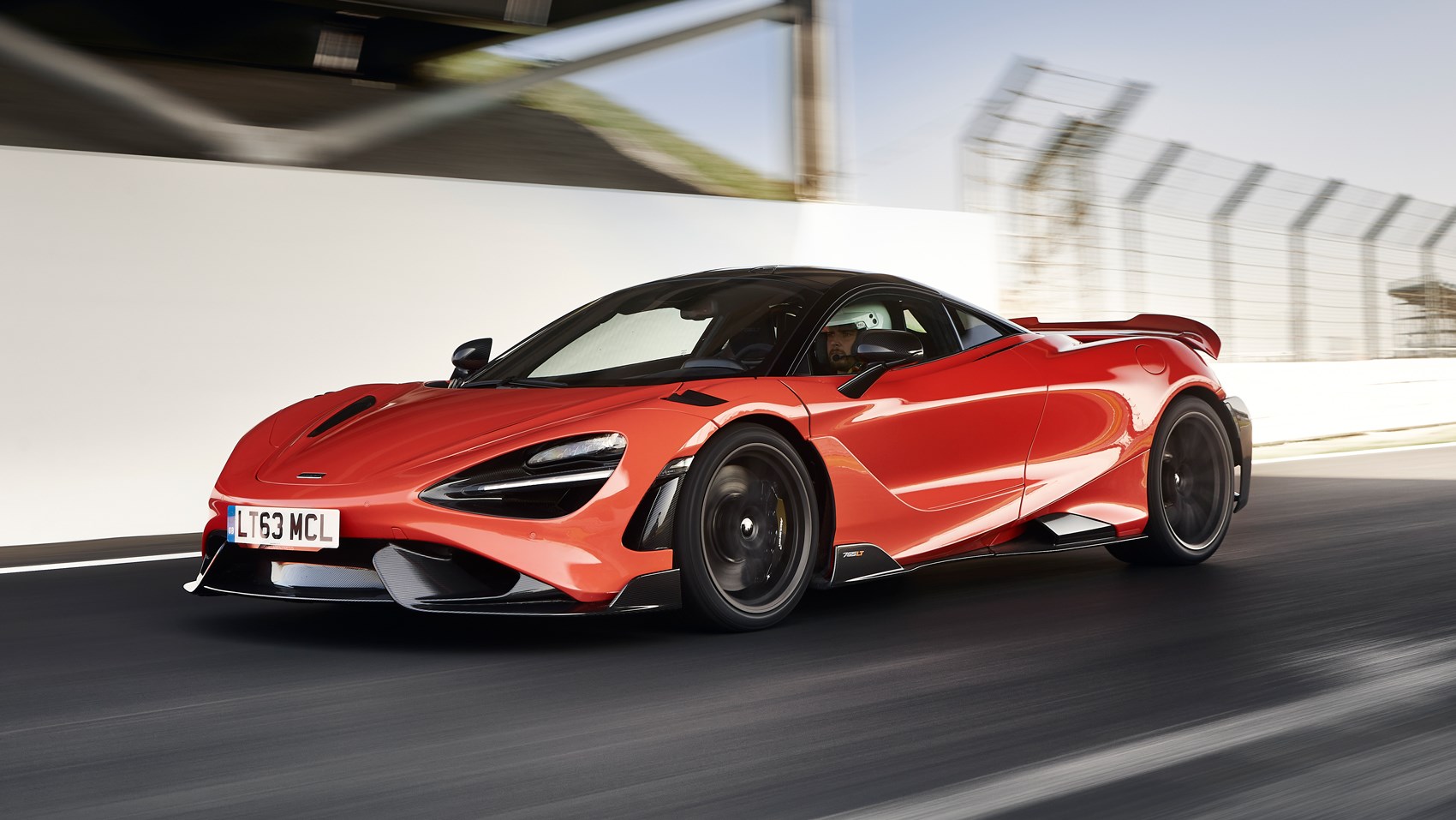
It sounds furious – not particularly tuneful or soul-stirring, but angry, raw and metallic regardless of engine or road speed. It’s a visceral soundtrack that is enhanced thanks to extra stiff engine mounts by all sorts of vibration through the carbon tub and bucket seats. At tickover the door mirrors vibrate like you’re listening to loud music and the seat base buzzes harder than a random orbit sander.
What’s it like to drive?
It made Silverstone feel like a go-kart track, shrinking the long straights and holding onto so much speed in the corners that all of a sudden the run-off zone didn’t look quite so generous.
I didn’t see exactly what my top speed on the Hanger Straight was but it was in the 170s. Really it was the way the 765LT scrubbed that speed off for the Stowe right hander that was the most remarkable. Honestly, there were times it felt like the car had stopped and the rest of me was still heading towards the grandstand.
This car uses the rather special brakes from a McLaren Senna, and the wing pops up to create extra drag and downforce for the rear stoppers. As a result, stopping from 124mph takes just 108m – compared to the 123m the 720S takes. There are also extra cooling ducts to pump cold air around the pads, resulting in a temperature drop in the pads of 50 degrees C. At no point did the brakes feel like they were running out of stamina, and because the calipers are machined from a single block, the pedal pulses and squirms under your foot like it’s alive.
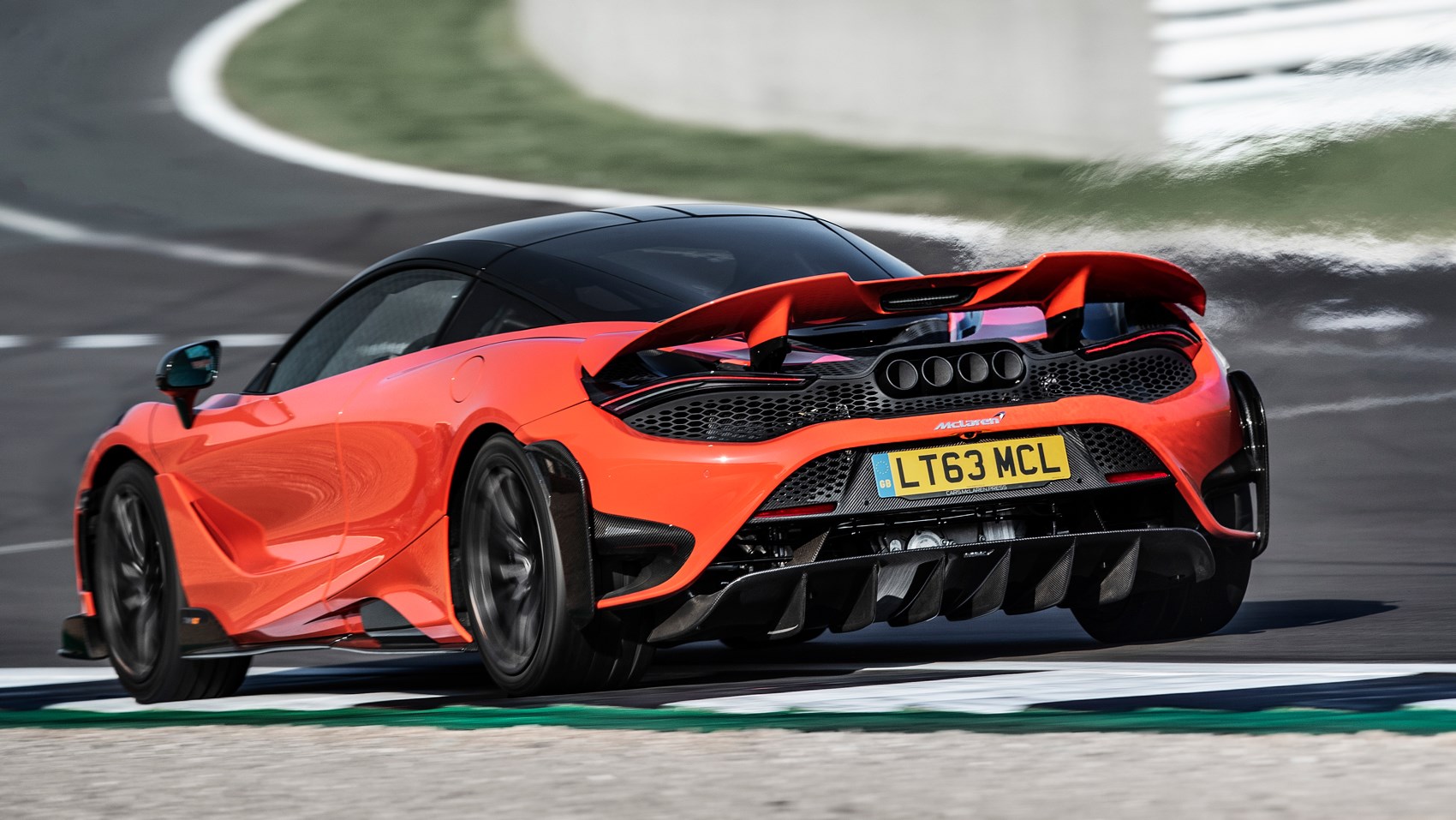
Silverstone was a wise choice for the launch of this car because it plays up to its biggest strengths – enormous acceleration, even more enormous stopping power, and clever aero that makes it feel rock solid in a fast corner. Facets that would be hard to find on the road. After a couple of laps it became apparent that my neck and lower back were the weak links in this equation, rather than anything mechanical in the car, despite being firmly gripped by a racing hardness and Hans device.
Helping to squash the Trofeo R tyres into the tarmac is a combination of a new splitter, bumper, and floor at the front, plus side skirts, rear bumper, rear diffuser and ‘Longtail’ active rear wing, all made from carbon fibre and resulting in 25% more downforce than the standard car. You can feel the effect of this in a fast corner, where the 765LT feels incredibly composed.
The only time it felt like it was loosening its grip on the surface was in the tighter, slower stuff, and even then it did such a good job of communicating its limits that the resulting attitude was easy to correct.
In fairness, the clever ESC that has been recalibrated for this car was probably more to do with the car’s stability than my own skill level – it works away unobtrusively in the background making minor corrections that you won’t notice, in order to avoid making a big one that you will. McLaren colloquially calls this ‘hero mode’, and that’s a fair description.

In those couple of moments of being a bit ambitious with my entry speed or getting back on the gas too early the car would start to rotate, but it never felt like it was going to snap. More like it was tapping me on the shoulder and quietly whispering, ‘err, you got that a bit wrong’.
Helping enormously in that regard is the 765LT’s brilliant steering, sped up a touch for this model but retaining the precision and depth of clarity we’ve come to expect from Woking’s cars. A 5mm drop in the front ride height and 6mm wider track is combined with lighter springs to bring about a reduction in bodyroll. It’s hard to say how it stacks up against a 720S on track but the 765LT handled incredibly flat.
The tyres did start showing considerable signs of wear after 50 minutes, during which time I’d also used a tank of fuel. An expensive hobby, then.
What’s it like to sit inside?
Broadly similar to the 720S in terms of ergonomics, so you still get the 8.0-inch central infotainment screen and folding driver display, plus the familiar three toggle switches in the Active Dynamics Panel.
After that though things start to look a little different – there’s alcantara and carbon fibre everywhere and the air conditioning and audio system have been taken out (although you can put them back in for free) plus there’s the option to have a double-glazed porthole in the bulkhead that allows you to see the engine from inside the car.
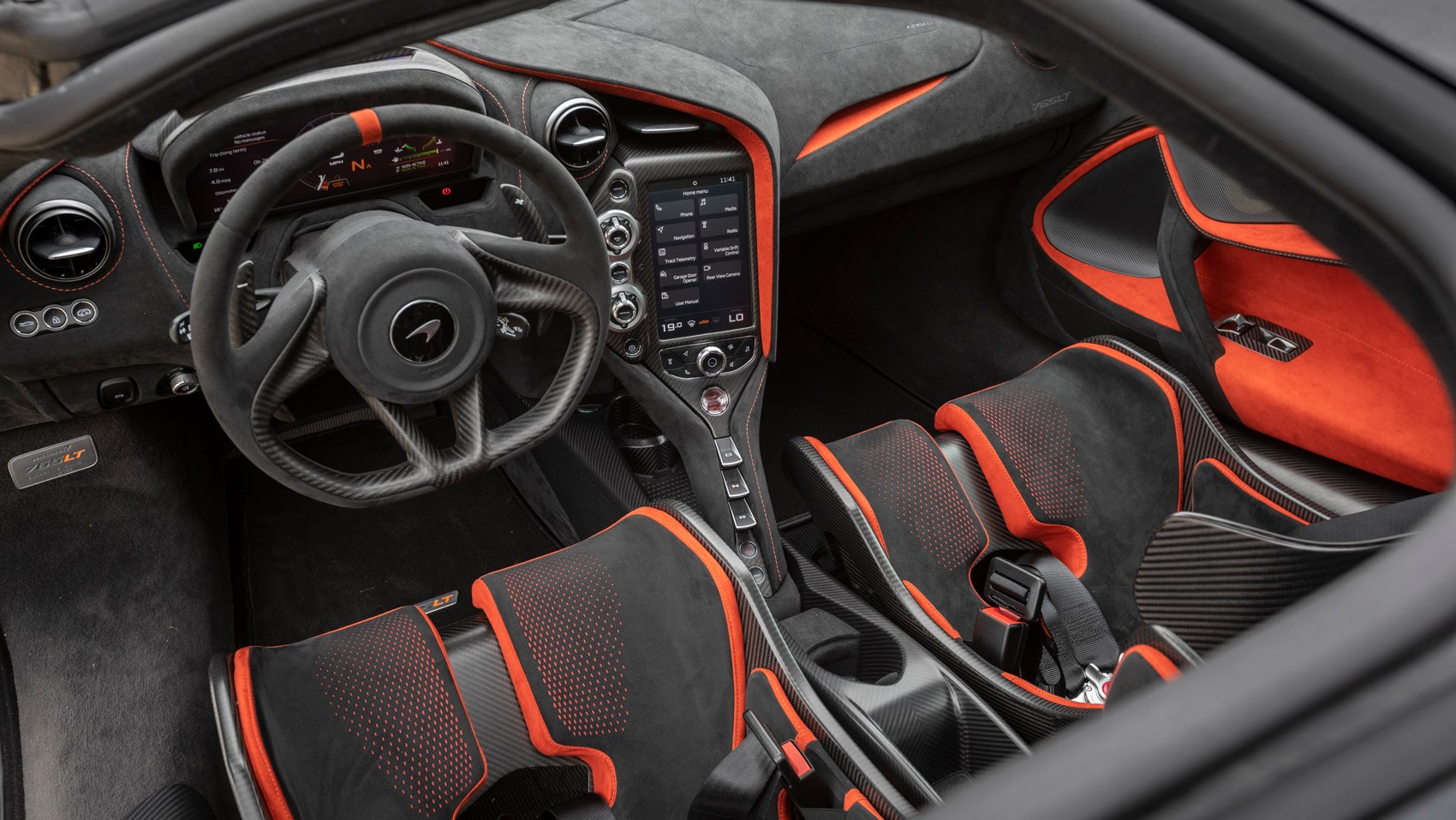
The seats are obviously very different, taking straight from a Senna (if you select the right option pack) and made from a double-skin of carbon fibre with padding stuck on the vital areas. Each one weighs 3.35kg, some 18kg less than those in the standard car.
This is also the first McLaren LT to feature thinner glass on the side windows and windscreen, while the c-pillar and rear screen are polycarbonate for even greater weight reduction.
Any eye-catching options for the more discerning 765LT owner?
If you really want to go all out then you’ll want to tick the ‘visual carbon’ box, this does away with exterior paint and shows off the bookended carbon weave of the 765LT’s body panels. It also saves 11kg in weight, owning to the fact the door outer and rear fender panels, usually aluminium, are replaced with carbon fibre.
To make the car a bit easier to live with you can also select door stowage pockets and a central tunnel with a lockable cubby instead of the standard nets, but bear in mind this will mark you out as a bit of a casual among 765LT owners.
Finally there’s a roof scoop (like the one on the 620R) and frankly if you don’t pick this you’ve done it all wrong. Roof scoops are cool.

McLaren 765LT: verdict
Despite its raw, prodigious performance on track McLaren engineers told us that the thing it they were most proud of was the balance between engagement and on-road refinement. As well as being imperious on a circuit this is a car that needs to be comfortable to live with and fun and involving on the right road.
You’re not going to get that from a 620R, which is a GT4 race car worked backwards and in reality too extreme for daily use. Likewise the Senna. The 765LT is a daily-driver dialled up for track use. It has to be as exciting to drive in the Alps as it is around Spa.
We’ll have to wait until we’ve driven it on UK roads before commenting but if it’s half as good as our experience so far and Woking’s claims suggest then mission accomplished, quite frankly.
Perhaps it’s best then not to look at the pantheon of McLaren LT cars and wonder where this one fits in, but to think of it fulfilling the needs of an existing 720S customer who wants more from their car both on road and on track. In this respect the 765LT feels like an instant winner.
Check out more McLaren reviews